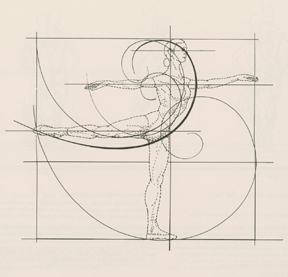My favorite video glossary is Insight Ballet Dictionary from the Royal Opera House: it features Akane Takada, Dawid Trzensimiech, Romany Pajdak, and other First Artists in a black-box studio, dancing to simple piano arrangements (check out the Greensleeves arrangement for "arm positions" -- sublime), executing steps and ports-de-bras with perfect, typically Royal Ballet-ish, form:
https://www.youtube.com/playlist?list=PL7E40E6E2DAB561B5
Another resource, perhaps a little less visually engaging but quite helpful nonetheless, is American Ballet Theater's online Ballet Dictionary. Some of the terms are accompanied by very short video clips of ABT principals and soloists performing the step defined; the image quality leaves something to be desired, and there is no sound, but still, the steps are isolated, so it is very clear what they are.
http://www.abt.org/education/dictionary/index.html
If you want to invest in a DVD, the Video Dictionary of Classical Ballet, from the mid-1980s is a good choice -- two discs and lots of big name American dancers (of that period) performing a variety of steps in combination, with a narrator who explains what the dancers are doing. It is organized in chapters, beginning with fundamental movements and positions. I like that the narrator actually has a decent French accent. This is probably the most comprehensive resource and is organized more like a textbook (thematically) than a dictionary; it is really helpful if you are trying to get a global grasp on describing ballet movement (e.g. if you're studying choreography). You can watch about 15 minutes from the beginning on YouTube (though I doubt this is a totally legitimate link, so it may get removed at some point)
https://www.youtube.com/watch?v=Ib8KOU2CyJo
While these video resources are great because they show well-trained dancers actually doing the steps, it's also fun to own a good ballet dictionary. The one I keep in my dance bag is Gail Grant's
Technical Manual and Dictionary of Classical Ballet, which helpfully gives the alternative names of certain pas that are called different things in the Russian, French, and Italian traditions.
 My one real reservation about most print ballet dictionaries is their puzzling lack of illustrations. Though some do have line-drawings or photographs (usually grainy, black-and-white), these are often less helpful than you might hope. However, there are exceptions to this: the Royal Academy of Dance has a book-version of its syllabus with good line drawings that can be quite helpful, while Lincoln Kirstein's Classic Ballet, with over 800 drawings by Carlus Dyer is widely thought to be the classic illustrated book. As the illustration here suggests, there is an element of Leonardo-esque idealism to the book. But all those swooping curves do make for fantastic visualizations.
My one real reservation about most print ballet dictionaries is their puzzling lack of illustrations. Though some do have line-drawings or photographs (usually grainy, black-and-white), these are often less helpful than you might hope. However, there are exceptions to this: the Royal Academy of Dance has a book-version of its syllabus with good line drawings that can be quite helpful, while Lincoln Kirstein's Classic Ballet, with over 800 drawings by Carlus Dyer is widely thought to be the classic illustrated book. As the illustration here suggests, there is an element of Leonardo-esque idealism to the book. But all those swooping curves do make for fantastic visualizations.The one thing that neither the print nor the digital resources seem to be able to help me with is reverse-defining a step. That is, identifying a step that I have seen, but do not know what to call. For example the other day I was watching this video of the "female variation" from Flower Festival at Genzano:
I wanted to know the name of the step that Natalia Bolshakova makes repeatedly between :43 and 1:00, where she does a jump that begins with a degage-envelope, and ends in plie pointe tendue devant. What is that? So far, nobody has been able to tell me, though they all go, "Oh, that's a great step... we should do that more!" I agree, but we need a name for it.
So if you can help me out here, please, illuminate me. I'm sure that anyone who is a REAL balletomane or ballet professional will know exactly what it is, but I'm stumped.
Ballet and other dance shoes often need to be bought bigger than street shoe size. They tend to come up small. We strongly advise you seek professional fitting advice and do not buy shoes with room to grow....
ReplyDeleteBallet equipment |
Ballet Workout Dvd
I didn't check the video but I know that variation and your description is nice and clear, so I'm going to say the step you're looking at is a demi-contretemps! We use contretemps as a transition step a few different ways; when you do a basic grand allegro zig-zag (tombe pas de bourree glissade saut de chat -contretemps- ) thats the transition between sides.
ReplyDelete